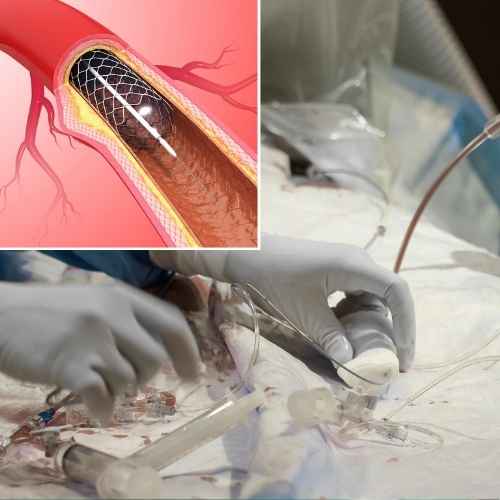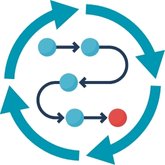Reasons for Heart Attack in Young Age: Dr. Munish Dev’s Guide
Reasons for Heart Attack in Young Age: Dr. Munish Dev’s Guide In today’s fast-paced life,…
Minimally invasive procedure to open blocked arteries and restore normal blood flow.
Coronary angioplasty is a minimally invasive procedure that is done to remove blockages in the coronary arteries of the heart. When cholesterol or other fatty substances accumulate in a person’s heart arteries, it stops the flow of blood, which can lead to serious conditions such as chest pain (angina) or heart attack.
In this procedure, the doctor inserts a thin tube called a catheter from the arteries of the patient’s groin, wrist or arm and slowly passes it to the heart. There is a small balloon in front of this catheter, which is inflated by reaching the blockage site. This leads to the widening of the arteries by pushing out the accumulated fat or blockage

PTRA is a minimally invasive procedure, i.e. it does not require a major operation. It is usually performed in a cath lab and the patient is given local anesthesia (local sedation).
The patient is given local anesthesia at the catheter insertion site (usually wrist or groin) and mild sedation to stay relaxed during the procedure.
A balloon-tipped catheter is positioned at the blockage site and inflated to widen the artery, compressing the plaque against the artery walls.
A thin, flexible tube (catheter) is inserted into the artery and guided toward the blocked coronary artery using live X-ray imaging.

A stent (small wire mesh tube) is usually placed at the site to keep the artery open, ensuring continuous blood flow.
A special contrast dye is injected through the catheter to make the arteries visible on X-ray and identify the blockage location.
The catheter and instruments are removed post procedure.
Early detection through echocardiography can prevent major heart problems.
Trusted expertise, advanced technology, and compassionate care make us your best choice for exceptional healthcare.
Trusted expertise delivering advanced, personalized treatments with care, precision, and proven results for your lasting wellness.
Focused on individual needs, our patient-centered treatments ensure personalized care, comfort, and optimal health outcomes.
24/7 expert care for heart emergencies—quick, reliable, and life-saving support when you need it most.
EXCELLENTTrustindex verifies that the original source of the review is Google. I was searching for a Cardiologist in Chandigarh to get my regular heart check up because I was having chest discomfort. I was highly impressed by Dr Munish Dev and his knowledge. He explained each and every report( blood reports as well as echocardiography and ecg) in detail. Highly recommend him for any heart related query.Posted onTrustindex verifies that the original source of the review is Google. I was really anxious about my heart condition, but Dr. Munish Dev’s calm nature and clear guidance put me at ease. The treatment went smoothly, and he kept a close check on my recovery. I truly feel he is the best cardiologist in Chandigarh, and I would recommend him to anyone who needs heart care.Posted onTrustindex verifies that the original source of the review is Google. “After visiting multiple doctors, I finally met Dr. Munish Dev. His approach is very patient-friendly, and he listens carefully before suggesting treatment. With his guidance, my health has improved significantly. No doubt, Dr. Munish Dev deserves the title of the best cardiologist in Chandigarh.”Posted onTrustindex verifies that the original source of the review is Google. “I was experiencing frequent chest discomfort and consulted Dr. Munish Dev. His diagnosis was quick, accurate, and his way of explaining the condition gave me full confidence. Truly, he is the best cardiologist in Chandigarh who combines knowledge with compassion. I highly recommend him to anyone looking for expert heart care.”Posted onTrustindex verifies that the original source of the review is Google. Dr. Munish dev is best cardiologist in entire chandigarh. I was suffering from coronary artery disease. Now I'm seeing best results after his treatment on me. I heartily thank you.Posted onTrustindex verifies that the original source of the review is Google. If you’re searching for the best cardiologist near me, I highly recommend Dr. Munish Dev. His expert diagnosis and compassionate approach truly set him apart. I visited him for a heart consultation, and the entire experience—from consultation to treatment—was smooth, informative, and reassuring.Posted onTrustindex verifies that the original source of the review is Google. Dr. Munish dev was excellent. One of the best cardiologist with awesome team.Posted onTrustindex verifies that the original source of the review is Google. All we know that after God blessings we faith in Doctors. Same thing l reliesed after having a wild heart attack.Dr Munish Dev equalised his stage equal to God in my view. Think he is the best cardiologist in Chandigarh trinity. Being a good doctor he is the best corrodial human being,well manoured person. I love like his thinking and personality.Posted onTrustindex verifies that the original source of the review is Google. Excellent cardiologist, very approachable and trustworthy. Highly recommended.Posted onTrustindex verifies that the original source of the review is Google. He is very intelligent doctor ..my father was here in this world because of him...thanks doctor munish
Get clear answers to your heart health questions with our detailed coronary angioplasty FAQs section.
Show off your recent blog posts in a standard format on the light and soft background with carousal option
Reasons for Heart Attack in Young Age: Dr. Munish Dev’s Guide In today’s fast-paced life,…
Introduction – What is Heart Blockage? Heart disease has become a major concern in today’s…
Heart Attack Symptoms Understanding Heart Attack Symptoms: Early Signs You Shouldn’t Ignore Heart disease remains…
Dr. Munish Dev completed his medical education in MD (Medicine) at the prestigious UCMS & GTB Hospital Delhi. Read More…
©2025 All Rights Reserved.